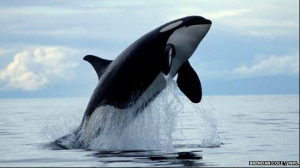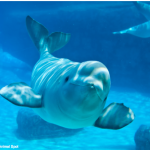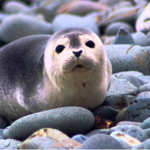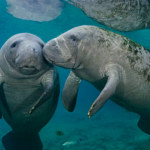In 2014, The Marine Mammal Commission and National Oceanic and Atmospheric Administration's (NOAA's) National Marine Fisheries Service Office of Protected Resources began collaborating with a growing number of partners including SCCOOS, to create a nearly real-time and nationally centralized system for data on marine mammal health. This nationalized system is referred to as the Marine Mammal Health Monitoring and Analysis Platform (Health MAP).

Types of Marine Mammals
Marine mammals are just like all other mammals in the sense that they have hair at some point during the life cycle, bear live young and produce milk to nurse, are warm-blooded, and breathe air through lungs. However, what makes marine mammals unique, are the special adaptations that help them thrive in the extremes of aquatic environments. There are four classifications of marine mammals, each with a multitude of species.

Cetaceans
Cetaceans include whales, dolphins, and porpoises.

Pinnipeds
Pinnipeds include sea lions, seals, and walruses.

Sirenians
Sirenians include manatees and dugongs.

Fissipeds
Fissipeds include sea otters and polar bears.
Why is Marine Mammal Tracking Important?
An increase in the reporting of diseases in marine organisms has raised concerns that the health of the ocean is deteriorating (Harvell et al. 2004, Gulland and Hall 2007). Diseases can alter mammal population and abundance, which may ultimately lead to species' extinction and can cause major regime changes within marine communities. This uncertainty is due to a lack of information on the true incidence of marine mammal diseases and few long-term datasets. These issues are caused by a lack of specific and directed marine mammal health monitoring, as well as a lack of data integration across taxa (Kim et al. 2005). Richardson and Poloczanksa (2008) argued that the severe lack of documented changes in marine systems associated with climate change is an artifact of the distribution of global science funding, the difficulty of disentangling multiple stressors from poorly sampled systems, and the way marine ecologists report research findings, amongst other factors. This is exemplified in the scarcity of readily available data on marine mammal mortality events, health status and distribution of pathogens, and toxins and pollutants in marine mammals.
How is it Beneficial for Us?
Even though long term data of marine mammal health is scarce, marine mammal health is still of great interest and there are existing sampling and response programs. Marine mammal die-offs attract high levels of public attention, as well as concern over human safety in areas of the die-offs. The concept of "One Health", that human and animal health are intimately associated and both are affected by environmental changes, is becoming widely accepted and needs to be extended from the terrestrial realm to the marine environment (Patz et al. 2011). Furthermore, climate change will likely have both direct and indirect effects on marine mammal diseases by changing pathogen survival, host and pathogen distributions, and host susceptibility. Detection of these changes will require baseline data and a coordinated health-tracking program (Burek et al. 2008). Hence, it is crucial to reevaluate how data on marine mammal health are collected and integrated so that we gain a better representation of actual marine mammal health. Understanding the temporal and spatial "hot spots" for disease outbreaks and health changes will, in turn, allow prioritization of management efforts to mitigate impacts on marine health.
Domoic acid (DA) is a marine biotoxin produced by some diatom species of the genus Pseduo-nitzschia. DA events appear to be increasing in magnitude and frequency along the West Coast of the United States. This is a concern for marine mammal health because DA is a potent neurotoxin, i.e an excitatory amino acid that has a high affinity for glutamate receptors that are present in vertebrate central nervous systems and heart. The interaction of DA and these glutamate receptors causes cell depolarization, dysfunction, and cell death, resulting in seizures, epilepsy, cardiomyopathy, and death depending upon the ingested dose. In humans, DA is the cause of a neurotoxic illness termed "amnesic shellfish poisoning (ASP), first recognized in Canada in 1987 following consumption of contaminated shellfish. In marine mammals, DA toxicosis is best documented in California Sea Lions (Zalophus Californianus) that develop severe neurological signs including epilepsy associated with acute and long-term effects of DA exposure. Lesions in affected sea lions include neuronal necrosis in the hippocampus, which may progress to hippocampal atrophy, and degenerative cardiomyopathy. California Sea Lions have stranded along the California coastline over the last 15 years due to DA toxicosis. This species appears to be the most commonly affected marine mammal in California, presumably due to a combination of foraging behavior and seasonal movements. Location of California Sea Lion strandings associated with DA toxicosis can provide insight into the location of DA-producing blooms, ad highlight areas for more intensive water sampling to monitor these blooms.
Marine Mammal Strandings
This map animates through time to show the stranding locations of California Sea Lions that were admitted to The Marine Mammal Center from February 1998 to May 2013 with DA toxicosis that died or had to be euthanized. For monthly updates on marine mammal strandings, take a look at the California HAB Bulletin.
